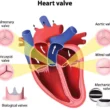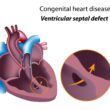Cardiomyopathy
The Frayed Heart Muscle: A Comprehensive Overview of Cardiomyopathies
The term describes a class of illnesses that impact the heart muscle. The heart muscle is weakened, stiffened, or enlarged by these disorders, which impairs the heart’s capacity to pump blood efficiently. Fatigue, heart failure, and other issues may result from this. By elucidating the various forms, causes, symptoms, and available treatments , this blog post will enable you to comprehend and effectively manage this ailment.
Table of Contents

The Powerhouse of the Heart: The Structure and Function of Muscles
- The Muscle of the Heart: The heart is a pump made of muscles that works nonstop to move blood throughout the body.
- Myocardium: The heart’s central muscle layer, or myocardium, is what gives the heart its pumping activity.
- Good Heart Function: The myocardium in a healthy heart is elastic and strong, which enables it to contract firmly with each beat and effectively pump blood.
- Cardiomyopathy: The heart’s ability to pump blood is compromised when the myocardium swells, weakens, or stiffens. This can result in a number of issues.
The Different Ways That Cardiomyopathies Present
There are various primary forms , and they are all distinguished by unique characteristics:
- Most frequent type: Dilated. The ventricles, the heart’s chambers, expand and weaken and lose their capacity to pump blood.
- Hypertrophic Cardiomyopathy: This condition causes an abnormal thickening of the heart muscle, usually in the septum (the wall that divides the ventricles), which can impede blood flow.
- Cardiomyopathy: In restrictive the heart muscle stiffens and becomes rigid, which impairs the heart’s natural capacity to relax and fill with blood.
There are many less typical varieties, like:
- Arrhythmogenic Right Ventricular Dysplasia (ARVD): The right ventricle is impacted by arrhythmogenic right ventricular dysplasia (ARVD), which raises the possibility of irregular cardiac rhythms.
- Peripartum Cardiomyopathy: A rare illness known as peripartum cardiomyopathy can arise during pregnancy or soon after giving delivery.
Hypertrophic: The Persons Responsible for the Decline:
Cardiomyopathies can arise from a number of causes, including:
- Genetic Predisposition: Hypertrophic is one of that can be inherited.
- Viral Infections: Viral infections have the potential to cause cardiomyopathy by weakening the heart muscle.
- Autoimmune Diseases: Heart muscle can be unintentionally attacked by diseases such as lupus, leading to.
- Toxins: Abuse of cocaine and alcohol can harm the heart muscle and cause cardiomyopathy.
- Pregnancy: An uncommon yet dangerous pregnancy complication is peripartum cardiomyopathy.
- High Blood Pressure: Over time, persistently high blood pressure can put stress on the heart and increase the risk of cardiomyopathy.
- Coronary Artery Disease (CAD): Although not the main cause, CAD can exacerbate pre-existing cardiomyopathy and damage the heart muscle.
The Heart’s Warning Signs: Cardiomyopathy Symptoms
The kind and severity of cardiomyopathy can affect the symptoms. Here are a few typical indicators:
- Breathlessness: Usually experienced during rest or after strenuous activity, this sensation is commonly characterised as being unable to catch one’s breath.
- Fatigue and Weakness: You can experience unexpected fatigue and lack of energy for regular tasks.
- Swelling in the legs, feet, and ankles: One possible symptom of heart failure is fluid buildup, which can result in swelling.
- Fast or irregular heartbeat: This may indicate that the heart is having difficulty pumping blood efficiently.
- Chest Pain or Discomfort: This symptom can occur in different conditions, but it is more common in hypertrophic cardiomyopathy.
- Palpitations: The sensation of irregular heartbeats, racing, or fluttering in the heart.
- Lightheadedness or dizziness: If the heart’s pumping function is compromised, this could lead to a reduction in blood supply to the brain.
Defying Weakness: Cardiomyopathy Treatment Alternatives
Cardiomyopathy has no known cure; however, symptoms can be managed, the disease’s course can be slowed, and consequences can be avoided with treatment. Possible course of treatment options include:
- Medication: Diuretics to eliminate extra fluid, blood pressure regulators, and drugs to enhance heart health and blood flow may be taken.
- Lifestyle Modifications: It’s important to maintain a heart-healthy diet, exercise on a regular basis (as tolerated), control your weight, and give up smoking.
- Medical Devices: To control heart rhythm, one may utilise defibrillators or pacemakers.
- Cardiac resynchronization therapy (CRT): involves implanting a device to synchronise ventricular contractions and enhance pumping efficacy.
- Surgery: A heart transplant or a septal myectomy, a surgical procedure to remove extra heart muscle tissue, may be considered in some situations.
Having a Weakened Heart but Living Well


